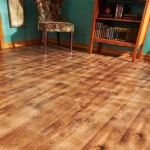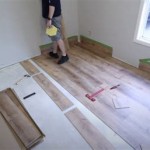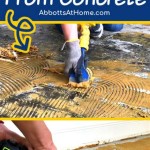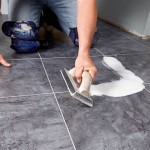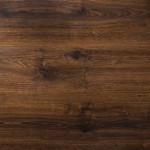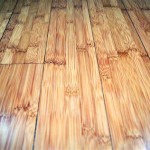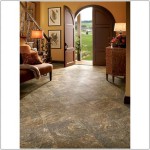```html
Expert Advice on Hardwood Flooring: A USA Today Guide
Hardwood flooring remains a highly sought-after flooring option for homeowners in the United States. Its enduring appeal stems from its durability, aesthetic versatility, and potential to increase property value. However, navigating the myriad choices in hardwood flooring can be overwhelming. This article provides expert advice to guide homeowners through the selection and maintenance process, ensuring a lasting and beautiful investment.
The United States flooring market presents a diverse range of hardwood options, encompassing solid hardwood, engineered hardwood, and various wood species, each with unique characteristics and pricing. Understanding these differences is crucial for making an informed decision that aligns with individual needs and budget.
Furthermore, proper installation and ongoing maintenance are paramount to preserving the longevity and beauty of hardwood floors. Neglecting these aspects can lead to costly repairs and diminish the overall value of the flooring investment.
Understanding Solid vs. Engineered Hardwood
One of the initial decisions homeowners face is choosing between solid and engineered hardwood. Solid hardwood consists of planks milled from a single piece of wood. This construction offers a classic look and the potential for refinishing multiple times throughout its lifespan, allowing it to adapt to changing style preferences or address wear and tear.
Engineered hardwood, on the other hand, features a multi-layered construction. It comprises a thin veneer of real hardwood bonded to a core typically made of plywood or high-density fiberboard (HDF). This construction provides greater dimensional stability compared to solid hardwood, making it less susceptible to expansion and contraction due to changes in humidity and temperature.
The stability of engineered hardwood makes it a suitable choice for installation in basements and over concrete slabs, environments where solid hardwood might be prone to warping or damage. However, the thinner veneer of engineered hardwood limits the number of times it can be refinished, often just once or twice, depending on the thickness of the top layer.
Cost is another factor to consider. Solid hardwood generally commands a higher price point than engineered hardwood, primarily due to the material cost and the more complex milling process. Installation costs can also vary, depending on the subfloor preparation required and the chosen installation method.
In summary, the choice between solid and engineered hardwood depends on the specific needs of the homeowner. Solid hardwood offers longevity and refinishing potential, while engineered hardwood provides stability and versatility in installation environments.
Choosing the Right Wood Species
Beyond the construction type, the selection of wood species significantly impacts the appearance, durability, and cost of hardwood flooring. Each species possesses unique grain patterns, color variations, and hardness ratings, influencing its suitability for different applications and aesthetic preferences.
Oak is a popular and widely available choice, known for its durability and distinctive grain patterns. White oak and red oak are the two primary varieties, each offering subtle differences in color and porosity. Oak is generally considered a mid-range option in terms of price and hardness.
Maple is another common hardwood species, prized for its light color and smooth grain. It offers a more contemporary aesthetic compared to oak and is often preferred for minimalist or modern interior designs. Maple is slightly harder than oak, providing good resistance to dents and scratches.
Hickory is among the hardest domestic hardwood species, making it an excellent choice for high-traffic areas. It features a pronounced grain pattern and a range of color variations, from light tan to dark brown. Hickory's durability comes at a higher price point compared to oak and maple.
Exotic hardwoods, such as Brazilian cherry (Jatoba) and tigerwood, offer unique aesthetics and exceptional hardness. These species often feature vibrant colors and striking grain patterns, adding a distinctive touch to any room. However, exotic hardwoods typically carry a higher price tag and may require specialized installation techniques.
The Janka hardness scale is a useful tool for comparing the relative hardness of different wood species. This scale measures the amount of force required to embed a steel ball into the wood. A higher Janka rating indicates a harder and more durable wood.
When selecting a wood species, homeowners should consider factors such as foot traffic, lifestyle, and desired aesthetic. Exploring different species and comparing their characteristics is essential to finding the ideal balance of durability, price, and visual appeal.
Installation Methods and Subfloor Preparation
Proper installation is critical to ensuring the long-term performance and stability of hardwood flooring. The choice of installation method depends on the type of hardwood (solid or engineered), the subfloor material, and the desired aesthetic.
Nail-down installation is the traditional method for installing solid hardwood floors. This involves securing the planks directly to a wooden subfloor using nails or staples. This method provides a secure and durable installation but requires a suitable wooden subfloor and can be more labor-intensive than other methods.
Glue-down installation involves adhering the hardwood planks directly to the subfloor using a specialized adhesive. This method is suitable for both solid and engineered hardwood and can be used over concrete subfloors. Proper subfloor preparation is essential to ensure a strong bond between the flooring and the subfloor.
Floating installation is a common method for installing engineered hardwood floors. In this method, the planks are connected to each other using a tongue-and-groove system, creating a "floating" floor that is not directly attached to the subfloor. This method is relatively easy to install and can be used over various subfloor materials, including concrete and existing flooring. However, it may require the use of an underlayment to provide cushioning and reduce noise.
Subfloor preparation is a crucial step in any hardwood flooring installation. The subfloor must be clean, level, and dry before installing the flooring. Any imperfections or moisture issues in the subfloor can lead to problems with the hardwood floor, such as warping, cupping, or buckling.
For concrete subfloors, it is essential to conduct a moisture test to ensure that the concrete is sufficiently dry before installing the hardwood. If the moisture level is too high, a vapor barrier or moisture mitigation system may be required.
For wooden subfloors, it is important to ensure that the subfloor is structurally sound and free from any signs of rot or damage. Any necessary repairs or replacements should be made before installing the hardwood flooring.
Hiring a professional installer is highly recommended to ensure that the hardwood flooring is installed correctly and according to the manufacturer's specifications. A professional installer will have the necessary tools and experience to handle any challenges that may arise during the installation process.
Maintaining Hardwood Floors for Longevity
Regular maintenance is essential for preserving the beauty and extending the lifespan of hardwood floors. Proper cleaning and care can prevent scratches, dents, and other damage, ensuring that the floors remain in excellent condition for years to come.
Regular sweeping or vacuuming is crucial for removing dirt, dust, and debris that can scratch the floor's surface. Use a soft-bristled broom or a vacuum cleaner with a floor brush attachment to avoid damaging the finish.
Damp mopping should be performed periodically to remove stubborn dirt and grime. Use a microfiber mop and a cleaning solution specifically designed for hardwood floors. Avoid using excessive water, as this can damage the wood.
Protecting hardwood floors from scratches and dents is essential. Use felt pads under furniture legs to prevent scratches when moving furniture. Place rugs or mats in high-traffic areas to protect the floor from wear and tear. Avoid wearing shoes with cleats or high heels on hardwood floors.
Controlling humidity levels is important for preventing warping or cupping. Maintain a consistent humidity level in the home, especially during periods of extreme temperature changes. Use a humidifier or dehumidifier as needed to maintain optimal humidity levels.
Refinishing hardwood floors is a process that involves sanding down the existing finish and applying a new coat of finish. This can restore the floor's original beauty and remove scratches, dents, and other imperfections. Solid hardwood floors can typically be refinished multiple times, while engineered hardwood floors may only be refinished once or twice, depending on the thickness of the veneer.
Promptly address any spills or leaks to prevent water damage. Wipe up spills immediately with a clean, dry cloth. Avoid using harsh chemicals or abrasive cleaners on hardwood floors, as these can damage the finish.
By following these maintenance tips, homeowners can ensure that their hardwood floors remain beautiful and durable for many years to come.
```
Flooring Types Pros And Cons Mr Handyman

Capital Hardwood Flooring Linkedin

How Long Does It Take To Refinish Hardwood Floors Refinishing Guide Reallyfloors America S Est Flooring

What Is Engineered Wood Flooring Made Of And Beyond Blog
%202.jpg?strip=all)
Light Vs Dark Hardwood Flooring America

11 Types Of Flooring That Will Upgrade Your Home Instantly Colibri Real Estate

Types Of Hardwood Flooring Wood Species And Construction Options Reallyfloors America S Est

Nwfa National Wood Flooring Association
How Much Hardwood Flooring Costs And To Save

Light Vs Dark Hardwood Flooring America
See Also
